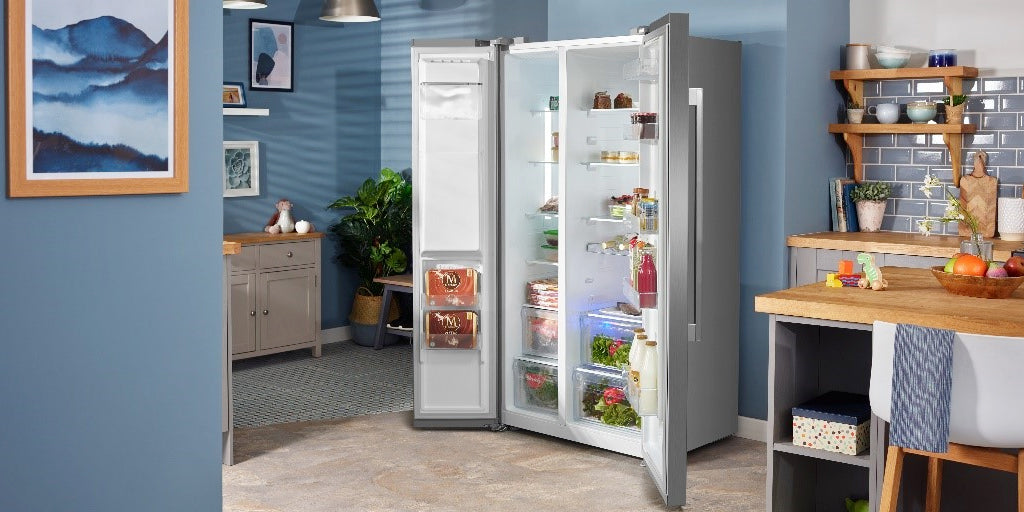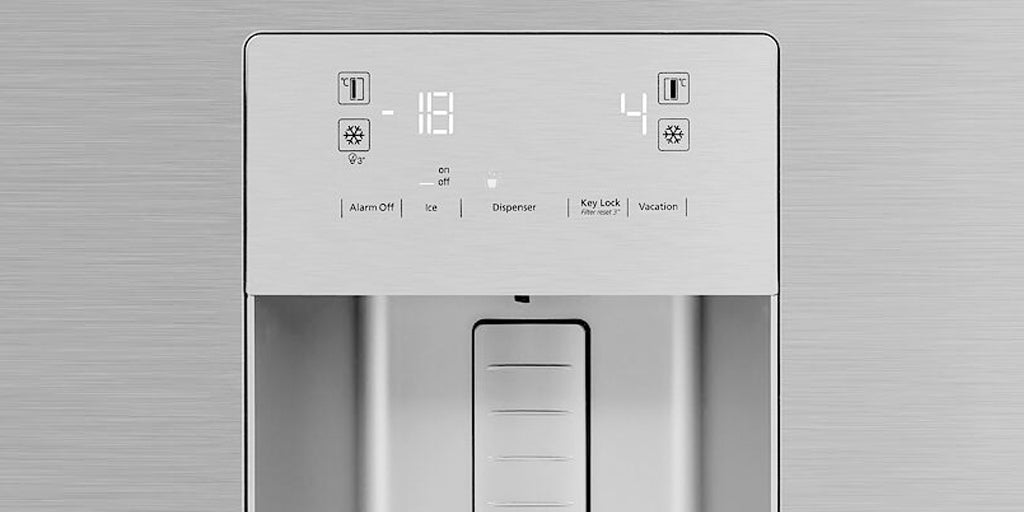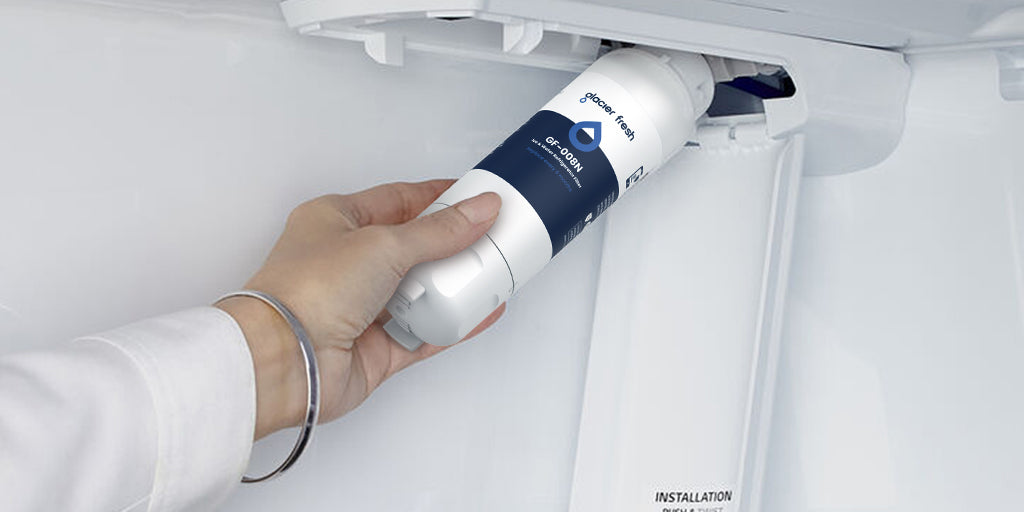Table of Contents:
Why should you change your refrigerator water filter?
Signs you need to change your Beko refrigerator water filter
Types of Beko refrigerator water filters
Steps to change the Beko refrigerator water filter
How to choose a replacement water filter for your Beko refrigerator
Additional tips on maintaining your Beko refrigerator water filter
Conclusion
Are you experiencing strange odors or tastes in your water? It might be time to change your Beko 4874960100 water filter. In this article, we'll guide you through replacing your filter to ensure you have clean and fresh drinking water. Discover the signs that indicate it's time for a change, learn about different types of filters, and get step-by-step instructions on how to install a rep lacement filter. Let's get started!
Why should you change your refrigerator water filter?
You should change your refrigerator's water filter to ensure the quality and safety of your drinking water. One of the main reasons is the importance of clean and pure drinking water. By changing the filter, you can effectively remove impurities such as chlorine, sediment, and other contaminants that may be present in your tap water. This not only improves the taste and odor of your drinking water but also ensures that it's safe for consumption.
Another advantage of changing the water filter is that it helps to prolong the life of your refrigerator. Over time, the accumulation of impurities can cause the filter to become clogged, which can strain the refrigerator's water system. By regularly replacing the filter, you can prevent this buildup and maintain the optimal functioning of your appliance.
In addition, changing the water filter is a cost-effective solution. While it may seem like an additional expense, it's more cost-effective than purchasing bottled water. By investing in a good-quality filter and changing it as recommended, you can save money in the long run.
Signs you need to change your Beko refrigerator water filter
If your Beko refrigerator water has a strange taste or odor, it may be a sign that you must change the water filter. The water filter in your refrigerator plays a crucial role in ensuring the quality of the water you consume. Over time, the filter can become clogged with impurities, affecting its effectiveness in removing contaminants and improving the taste and smell of your water. To help you identify when it's time to replace the filter, here are some common signs to look out for:
| Common Signs | Filter Lifespan | Water Quality |
| Strange taste or odor | 6 months | Impurities present |
| Reduced water flow | 6 months | Cloudy or discolored |
| Ice tastes strange | 6 months | Chlorine taste |
Most Beko 4874960100 water filter replacement have a lifespan of approximately six months, although this can vary depending on usage and water quality. It is recommended to replace the filter at least every six months to maintain clean and fresh-tasting water. When replacing the filter, follow the manufacturer's instructions to ensure proper installation. By regularly replacing the filter, you can enjoy more sterile and better-tasting water from your Beko refrigerator.
Types of Beko refrigerator water filters

Now, let's talk about the different Beko refrigerator water filters available. There are three main types to choose from:
External water filters
External water filters for Beko refrigerators are commonly replaced every six months. These filters provide numerous benefits, such as improving the taste and quality of the water you drink and reducing contaminants. When comparing external water filters to internal filters, external filters are generally easier to install and maintain. To install an external water filter on your Beko refrigerator, locate the filter housing, usually on the back of the fridge, and connect the filter to the water line.
In case of common issues with external filters, such as low water pressure or leaks, troubleshooting can involve checking the water line connections and replacing any faulty parts. To maintain and clean your external water filter, follow the manufacturer's instructions and regularly replace the filter cartridge to ensure optimum performance.
Internal water filters
Internal water filters offer several benefits for your refrigerator. They're typically more compact and take up less space than external filters, allowing you to maximize the storage capacity in your fridge. Internal filters also provide a cleaner and more aesthetically pleasing look since they're hidden inside the refrigerator.
Compared to external filters, internal filters are generally easier to install and replace. However, they may have a shorter lifespan and require more frequent replacements. Common problems with internal water filters include clogging and reduced water flow. To clean and maintain internal filters, follow the manufacturer's instructions and replace them regularly.
Built-in water filters
Built-in water filters offer several benefits compared to external water filters. They're designed to fit seamlessly into your refrigerator, saving valuable space in your kitchen. Additionally, built-in filters provide a continuous supply of clean and filtered water without additional equipment. However, like any appliance, built-in water filters can encounter problems such as clogs or leaks. To troubleshoot these issues, you can flush the filter or check for any loose connections.
Steps to change the Beko refrigerator water filter
Step 1: Locate and unscrew the old filter
To change the Beko fridge water filter, locate and unscrew the old filter. Follow these steps for a smooth replacement process:
- Start by disconnecting the water supply to the refrigerator to avoid any leaks.
- Locate the filter housing, usually found inside the refrigerator or at the back.
- Carefully remove any shelves or compartments that may obstruct access to the filter.
- Once you have a clear view, identify the old filter and unscrew it counterclockwise.
Replacing the filter is an essential part of filter maintenance to ensure clean and fresh water. If you encounter any issues, such as leaks, during the process, troubleshooting leaks can help identify the problem. Once the old filter is removed, you can proceed to install the new filter following the manufacturer's instructions.
Step 2: Insert and secure the new filter into place
After unscrewing the old filter, you can now insert and secure the new filter into place to ensure clean and fresh water in your Beko refrigerator.
To begin, take the new filter and align it with the opening where the old filter was removed. Make sure the arrows on the new filter are facing upwards. Gently push the filter into the opening until it fits snugly. Once in place, rotate the filter clockwise until you feel it lock into position. This step is crucial for proper filter installation and ensures a tight seal. Take a moment to double-check that the filter is securely in place and flush with the housing.
Step 3: Reset the filter light

To reset the filter light after changing the Beko refrigerator water filter, you'll need to follow these simple steps:
- 1: Locate the filter indicator light on the control panel of your Beko refrigerator.
- 2: Press the filter reset button for approximately 5 seconds until the light turns off.
- 3: Release the button and check if the filter light has been successfully reset.
- 4: If the light doesn't turn off, repeat the reset procedure or refer to the troubleshooting tips in your refrigerator's manual.
Resetting the filter light is an important step after the filter replacement to ensure accurate monitoring of the filter's lifespan. Following these steps, you can easily reset the filter indicator light and continue enjoying clean and fresh water from your Beko refrigerator.
Step 4: Check for leaks in the hoses and connections
Next, you will need to check for any leaks in the hoses and connections of your Beko refrigerator after changing the water filter. This step is crucial to ensure that your refrigerator is functioning properly and to prevent any potential water damage to your home.
Checking the connections and troubleshooting leaks will help you maintain the efficiency of your water filter and extend its lifespan. To do this, tighten all the connections and inspect the hoses for any signs of leakage. If you notice any leaks, it is important to address them immediately. This can be done by tightening the connections or replacing any damaged hoses. Regularly checking the connections and troubleshooting leaks are essential for water filter maintenance to keep your Beko refrigerator in optimal condition.
How to choose a replacement water filter for your Beko refrigerator
To choose a replacement water filter for your Beko refrigerator, consider the model number and filter compatibility. This will ensure you select a filter compatible with your specific refrigerator model. Here are some important factors to keep in mind when choosing a replacement water filter:
- Model number compatibility: Before purchasing a replacement filter, check if it's compatible with your Beko refrigerator model. This information can usually be found in the refrigerator's user manual or the manufacturer's website.
- Installation process: Look for a replacement filter that offers easy installation. Some filters require tools or professional help for installation, while others can be easily replaced by following simple instructions.
- Filter lifespan: Consider the lifespan of the replacement filter. Different filters have varying lifespans, ranging from three to six months or even longer. Choose a filter that suits your household's water consumption and budget.
- Filter efficiency: Look for a replacement filter with high filtration efficiency. This ensures that it effectively removes contaminants and impurities from your drinking water, providing clean and safe water.
Remember to follow the manufacturer's instructions for replacing the water filter and regularly replace it to maintain efficiency. Proper maintenance and regular filter replacements will help ensure the longevity of your Beko refrigerator and the quality of your drinking water.
Additional tips on maintaining your Beko refrigerator water filter

Maintain your Beko water filter by regularly cleaning and inspecting it for any signs of damage or clogging. This will help ensure that your filter functions optimally and provides you with clean and safe drinking water.
To maximize the longevity of your water filter and avoid potential problems, follow these tips:
1. Cleaning techniques: Clean the filter by gently rinsing it under running water or soaking it in warm water and mild dish soap. Avoid using abrasive cleaners or scrub brushes, as they can damage the filter.
2. Filter maintenance schedule: Create a regular maintenance schedule to remind yourself to clean the filter every one to three months, depending on water usage and quality. This will prevent any build-up of contaminants that can affect the filter's performance.
3. Common filter issues: Be aware of common issues such as slow water flow, unusual taste or odor, or decreased in water quality. These could indicate that the filter needs to be cleaned or replaced.
4. Troubleshooting tips: If you encounter any issues with your water filter, refer to the user manual or contact Beko customer support for troubleshooting tips and guidance.
Conclusion
In conclusion, changing the water filter in your Beko refrigerator is an important maintenance task that ensures clean and fresh drinking water. By regularly replacing the filter, you can avoid potential health risks and enjoy the best possible water quality.
Remember to look out for signs that indicate a filter change is needed and choose the right replacement filter for your specific Beko model. These steps will help keep your refrigerator and water supply in optimal condition.


















